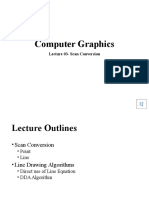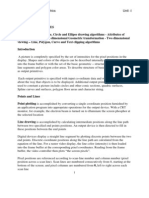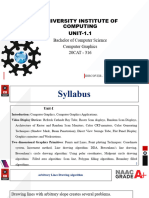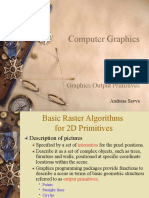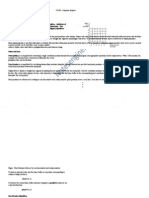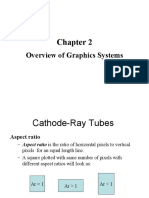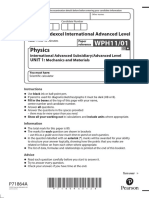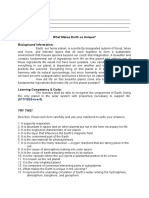0% found this document useful (0 votes)
31 views46 pagesScan Conversion & Line Algorithms
1. The DDA algorithm converts lines to pixels by taking incremental steps along the line based on the slope. It steps by 1 pixel along the x-axis and then calculates the corresponding y-value based on the slope.
2. Issues can occur for very steep lines where the y-increment is much larger than the x-increment. The algorithm is modified to instead step along the y-axis for such lines.
3. The generic solution is to take a unit step along the axis with the greater rate of change, whether it be x or y, and calculate the other coordinate
Uploaded by
sumayya shaikCopyright
© © All Rights Reserved
We take content rights seriously. If you suspect this is your content, claim it here.
Available Formats
Download as PPT, PDF, TXT or read online on Scribd
0% found this document useful (0 votes)
31 views46 pagesScan Conversion & Line Algorithms
1. The DDA algorithm converts lines to pixels by taking incremental steps along the line based on the slope. It steps by 1 pixel along the x-axis and then calculates the corresponding y-value based on the slope.
2. Issues can occur for very steep lines where the y-increment is much larger than the x-increment. The algorithm is modified to instead step along the y-axis for such lines.
3. The generic solution is to take a unit step along the axis with the greater rate of change, whether it be x or y, and calculate the other coordinate
Uploaded by
sumayya shaikCopyright
© © All Rights Reserved
We take content rights seriously. If you suspect this is your content, claim it here.
Available Formats
Download as PPT, PDF, TXT or read online on Scribd
/ 46









